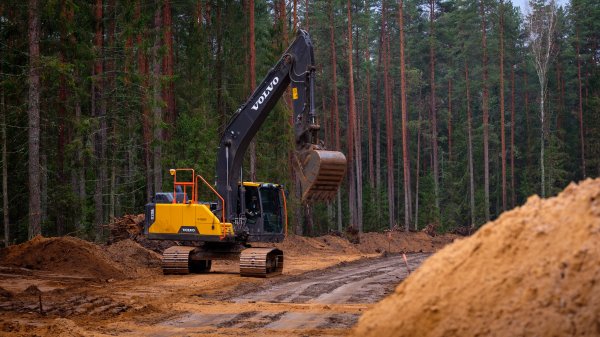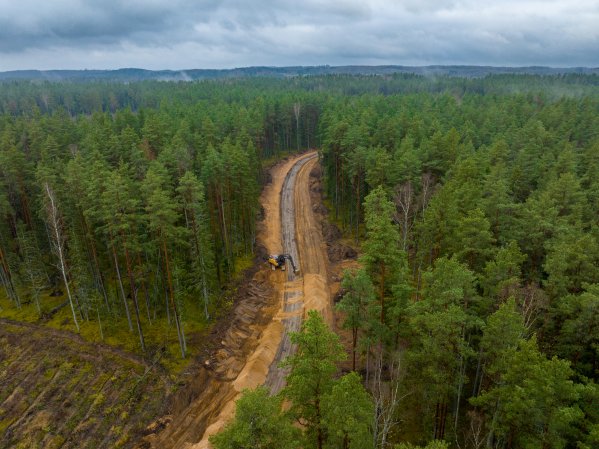A Specially Equipped Excavator Is Used in the Construction of a Forest Road
To ensure high-quality and faster construction of forest roads, JSC “Latvia's State Forests” (LVM) cooperates with service providers who carry out the work responsibly and introduce new technologies in the execution of works. In LVM South Latgale Region, an excavator with a navigation device is used in the construction process of the forest road “Kazarmu ceļš”; during the work, the device shows a 3D model of the road under construction.
An excavator is one of the main units of forest road construction equipment, which is used for digging soil, moving it over a short distance or pouring it into a vehicle, as well as for creating embankments.
“A 3D model of the highway project is transferred to the excavator's navigation system. The excavator operator, who is sitting in the cab, can see on its monitor where and how deep to dig. By using such a navigation system, the builder saves both time and human resources, because it is not necessary to mark the designed height marks in nature; moreover, the works are carried out with high precision,” says Kaspars Jonāns, LVM South Latgale Region Forest Infrastructure Specialist.
Coniferous forests, where the GPS signal is better received, are best suited to work with such state-of-the-art equipment.
Such modern technological solutions also increase the competitiveness of builders; they can offer lower construction costs and faster order execution time, at the same time ensuring top quality of the work to be performed.
The construction works of the forest road “Kazarmu ceļš”, which will be 3 144 km long, are to be completed by next autumn.
Daiga Ancāne, Head of Forest Management Planning of LVM South Latgale Region: “The forest road “Kazarmu ceļš”, which is currently under construction, connects to the Svente-Lithuanian border road. Since the Ilūkste forest massif is divided by the railway, the new forest road will facilitate access to each forest area, to carry out forest management works – planting, agro-technical tending, protection measures and forest stand tending, as well as to ensure wood deliveries in any month of the year. The forest massif mainly consists of dry forest types, which have a high fire risk, the proximity of the railway also increases the risk of fire outbreaks, so the newly built road is also important for ensuring fire risk measures.”
In the LVM mid-term strategy for 2023-2027, it is planned to continue the development programme of forest roads; the LVM Supervisory Board focuses not only on increasing efficiency and accessibility, but also on reducing fire safety risks, including in specially protected natural areas. This is especially important in the long term, for reducing fire risks caused by global climate change in State forests entrusted to the management of LVM.




